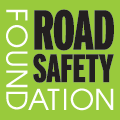What is EuroRAP?
The European Road Assessment Programme – EuroRAP AISBL – is an international not-for profit association (Association internationales Sans But Lucratif) registered in Belgium. Its members are motoring organisations, national and regional road authorities, and experts who have been elected because of the special contribution they have made to EuroRAP.
EuroRAP is a sister programme to EuroNCAP, the independent crash test programme that star rates new cars for the crash protection they provide to passengers and pedestrians. EuroNCAP demonstrates that well-designed crash protection can make family cars safer. Similarly, EuroRAP is beginning to show how roads can be made safer, so that vehicles, roads and people work together in a safe system.
OUR AIMS
The formal objectives of EuroRAP are to:
- Reduce death and serious injury on European roads rapidly through a programme of systematic testing of risk that identifies major safety shortcomings which can be addressed by practical road improvement measures
- Ensure assessment of risk lies at the heart of strategic decisions on route improvements, crash protection and standards of route management
- To forge partnerships between those responsible for a safe roads system – motoring organisations, vehicle manufacturers and road authorities
EuroRAP provides independent, consistent safety ratings of roads across borders, with partners in 29 countries.
The methods used are being applied worldwide in sister programmes in the United States, Australia, and New Zealand and in developing countries in South America, Asia and Africa through the umbrella International Road Assessment Programme (iRAP). Together these programmes share the vision of working for a world free of high risk roads.
EuroRAP has shown that the risk of detah and cripping injury can vary tenfold on different roads in the same country. Public, politicians and road engineers must be aware of high risk routes and how risk is distributed across a network – and be guided on what can be done to improve safety. Sometimes the cost of saving lives can be as little as the paint to provide clear road markings, so that drivers can read the road; or safety fencing to stop road users being routinely killed hitting the same trees or lamp-posts close to the roadside. The Road Assessment Programme has shown that the implementation of countermeasures at locations of high injury risk provide the potential for very high rates of economic return.
